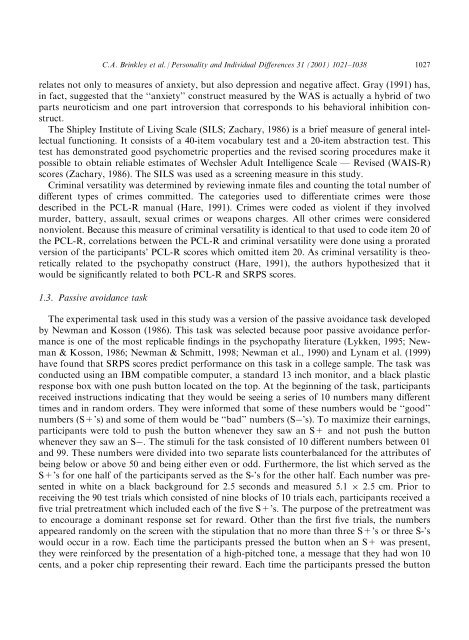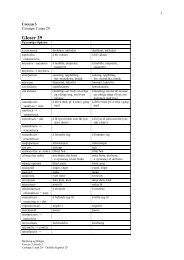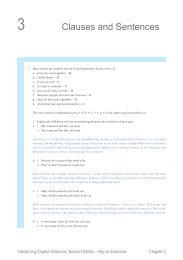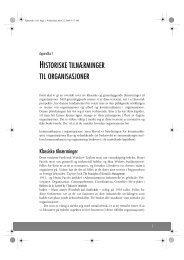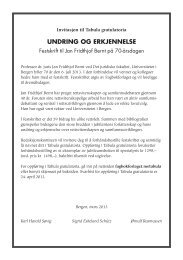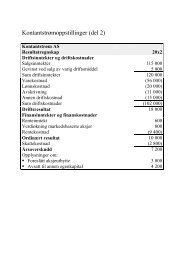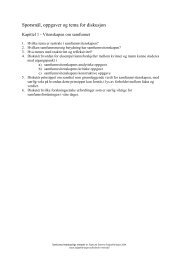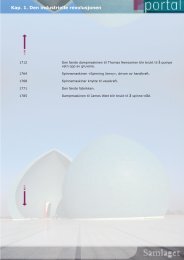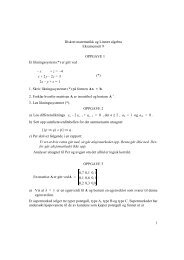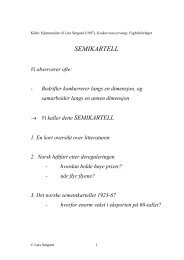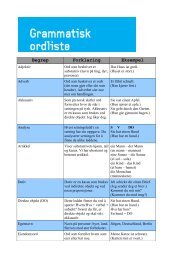Construct validation of a self-report psychopathy ... - Fagbokforlaget
Construct validation of a self-report psychopathy ... - Fagbokforlaget
Construct validation of a self-report psychopathy ... - Fagbokforlaget
You also want an ePaper? Increase the reach of your titles
YUMPU automatically turns print PDFs into web optimized ePapers that Google loves.
elates not only to measures <strong>of</strong> anxiety, but also depression and negative a€ect. Gray 1991) has,<br />
in fact, suggested that the ``anxiety'' construct measured by the WAS is actually a hybrid <strong>of</strong> two<br />
parts neuroticism and one part introversion that corresponds to his behavioral inhibition construct.<br />
The Shipley Institute <strong>of</strong> Living Scale SILS; Zachary, 1986) is a brief measure <strong>of</strong> general intellectual<br />
functioning. It consists <strong>of</strong> a 40-item vocabulary test and a 20-item abstraction test. This<br />
test has demonstrated good psychometric properties and the revised scoring procedures make it<br />
possible to obtain reliable estimates <strong>of</strong> Wechsler Adult Intelligence Scale Ð Revised WAIS-R)<br />
scores Zachary, 1986). The SILS was used as a screening measure in this study.<br />
Criminal versatility was determined by reviewing inmate ®les and counting the total number <strong>of</strong><br />
di€erent types <strong>of</strong> crimes committed. The categories used to di€erentiate crimes were those<br />
described in the PCL-R manual Hare, 1991). Crimes were coded as violent if they involved<br />
murder, battery, assault, sexual crimes or weapons charges. All other crimes were considered<br />
nonviolent. Because this measure <strong>of</strong> criminal versatility is identical to that used to code item 20 <strong>of</strong><br />
the PCL-R, correlations between the PCL-R and criminal versatility were done using a prorated<br />
version <strong>of</strong> the participants' PCL-R scores which omitted item 20. As criminal versatility is theoretically<br />
related to the <strong>psychopathy</strong> construct Hare, 1991), the authors hypothesized that it<br />
would be signi®cantly related to both PCL-R and SRPS scores.<br />
1.3. Passive avoidance task<br />
C.A. Brinkley et al. / Personality and Individual Di€erences 31 2001) 1021±1038 1027<br />
The experimental task used in this study was a version <strong>of</strong> the passive avoidance task developed<br />
by Newman and Kosson 1986). This task was selected because poor passive avoidance performance<br />
is one <strong>of</strong> the most replicable ®ndings in the <strong>psychopathy</strong> literature Lykken, 1995; Newman<br />
& Kosson, 1986; Newman & Schmitt, 1998; Newman et al., 1990) and Lynam et al. 1999)<br />
have found that SRPS scores predict performance on this task in a college sample. The task was<br />
conducted using an IBM compatible computer, a standard 13 inch monitor, and a black plastic<br />
response box with one push button located on the top. At the beginning <strong>of</strong> the task, participants<br />
received instructions indicating that they would be seeing a series <strong>of</strong> 10 numbers many di€erent<br />
times and in random orders. They were informed that some <strong>of</strong> these numbers would be ``good''<br />
numbers S+'s) and some <strong>of</strong> them would be ``bad'' numbers S 's). To maximize their earnings,<br />
participants were told to push the button whenever they saw an S+ and not push the button<br />
whenever they saw an S . The stimuli for the task consisted <strong>of</strong> 10 di€erent numbers between 01<br />
and 99. These numbers were divided into two separate lists counterbalanced for the attributes <strong>of</strong><br />
being below or above 50 and being either even or odd. Furthermore, the list which served as the<br />
S+'s for one half <strong>of</strong> the participants served as the S-'s for the other half. Each number was presented<br />
in white on a black background for 2.5 seconds and measured 5.1 2.5 cm. Prior to<br />
receiving the 90 test trials which consisted <strong>of</strong> nine blocks <strong>of</strong> 10 trials each, participants received a<br />
®ve trial pretreatment which included each <strong>of</strong> the ®ve S+'s. The purpose <strong>of</strong> the pretreatment was<br />
to encourage a dominant response set for reward. Other than the ®rst ®ve trials, the numbers<br />
appeared randomly on the screen with the stipulation that no more than three S+'s or three S-'s<br />
would occur in a row. Each time the participants pressed the button when an S+ was present,<br />
they were reinforced by the presentation <strong>of</strong> a high-pitched tone, a message that they had won 10<br />
cents, and a poker chip representing their reward. Each time the participants pressed the button


